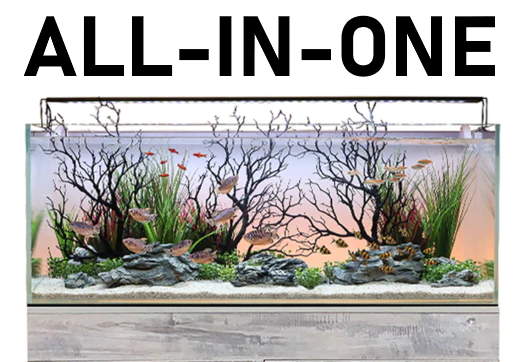Introduction:
Fishkeeping has evolved from a simple hobby to a sophisticated art form, and at the heart of this aquatic fascination lies the fish tank. Beyond being a glass enclosure filled with water, fish tanks have become miniature ecosystems, providing a captivating glimpse into the vibrant and diverse world beneath the surface. In this article, we will explore the art and science of fish tanks, uncovering the secrets to creating a serene underwater oasis for your aquatic friends.
The Importance of Proper Planning:
Before diving into the depths of fish tank ownership, it’s crucial to lay a solid foundation through thoughtful planning. Consider the type of fish you want to keep, the size of the tank, and the overall aesthetic you wish to achieve. Research is key; different fish species have varying requirements in terms of water conditions, temperature, and tank mates. This information will help you choose the right equipment and set up an environment that promotes the health and happiness of your aquatic companions.
Tank Size Matters:
The size of your fish tank plays a pivotal role in the well-being of your fish. While it may be tempting to opt for a smaller tank for convenience, it’s essential to understand that larger tanks provide a more stable environment. They offer better water dilution, which helps maintain consistent water parameters and reduces the risk of sudden fluctuations that can stress or harm your fish. Additionally, a larger tank provides more swimming space for your fish, mimicking their natural habitats and promoting overall health.
Choosing the Right Equipment:
Investing in quality equipment is crucial for the success of your fish tank. Here are some essential items to consider:
Filtration System: A reliable filtration system is the backbone of any fish tank. It helps remove impurities, toxins, and excess nutrients from the water, creating a clean and healthy environment for your fish. Choose a filter that suits the size of your tank and the specific needs of your fish.
Heating System: Many fish species are sensitive to temperature fluctuations, making a heater a vital component of your setup. Maintain the appropriate water temperature for your fish by investing in a high-quality, adjustable heater.
Lighting: Proper lighting not only enhances the visual appeal of your tank but also plays a role in the well-being of your fish and live plants. Research the lighting requirements of your fish and plants to ensure they receive the right spectrum and duration of light.
Substrate and Decorations: The substrate you choose, whether sand, gravel, or another material, can influence the aesthetics and functionality of your tank. Decorations, such as rocks, driftwood, and artificial plants, provide hiding spots for fish and create a more naturalistic environment.
Creating a Natural Aquascape:
Once you have the essential equipment in place, it’s time to unleash your creativity and design a captivating aquascape. Consider the following tips for creating a natural and visually appealing underwater world:
Hardscape Placement: Arrange rocks and driftwood strategically to create caves, ledges, and open spaces. This mimics the natural habitat of many fish species and provides them with areas to explore and hide.
Plant Selection: Live plants not only add beauty to your tank but also contribute to the overall health of the ecosystem. Choose plants that are compatible with your fish and provide adequate lighting and nutrients for their growth.
Color Palette: Consider the colors of your fish, substrate, and decorations when planning your aquascape. A well-thought-out color scheme can enhance the visual appeal of your tank and create a harmonious and relaxing atmosphere.
Maintaining Water Quality:
Consistent water quality is essential for the health and happiness of your fish. Regular maintenance tasks include:
Water Changes: Perform routine water changes to remove accumulated waste and replenish essential minerals. The frequency and volume of water changes depend on the size of your tank and the needs of your fish.
Water Testing: Regularly test the water parameters, including pH, ammonia, nitrites, and nitrates, to ensure they remain within the appropriate range for your fish. Adjustments may be necessary to maintain optimal conditions.
Cleaning: Keep the tank clean by removing debris, uneaten food, and algae. Use a gentle aquarium-safe scrubber to clean the glass and decorations, being careful not to disturb the substrate or stress your fish.
Choosing Compatible Tankmates:
When selecting fish for your tank, consider their compatibility in terms of size, temperament, and water requirements. Some fish thrive in community setups, while others prefer solitude. Research the social behaviors of your chosen species to prevent conflicts and ensure a harmonious tank environment.
Conclusion:
Owning a fish tank is a rewarding experience that combines the beauty of nature with the satisfaction of creating a thriving ecosystem. By carefully planning, investing in quality equipment, and embracing your creativity, you can transform a simple glass box into a mesmerizing underwater oasis. As you embark on your fishkeeping journey, remember that each tank is a unique expression of its owner’s personality and passion for the aquatic world. With dedication and care, you can cultivate a serene and enchanting environment that brings joy to both you and your finned friends.

